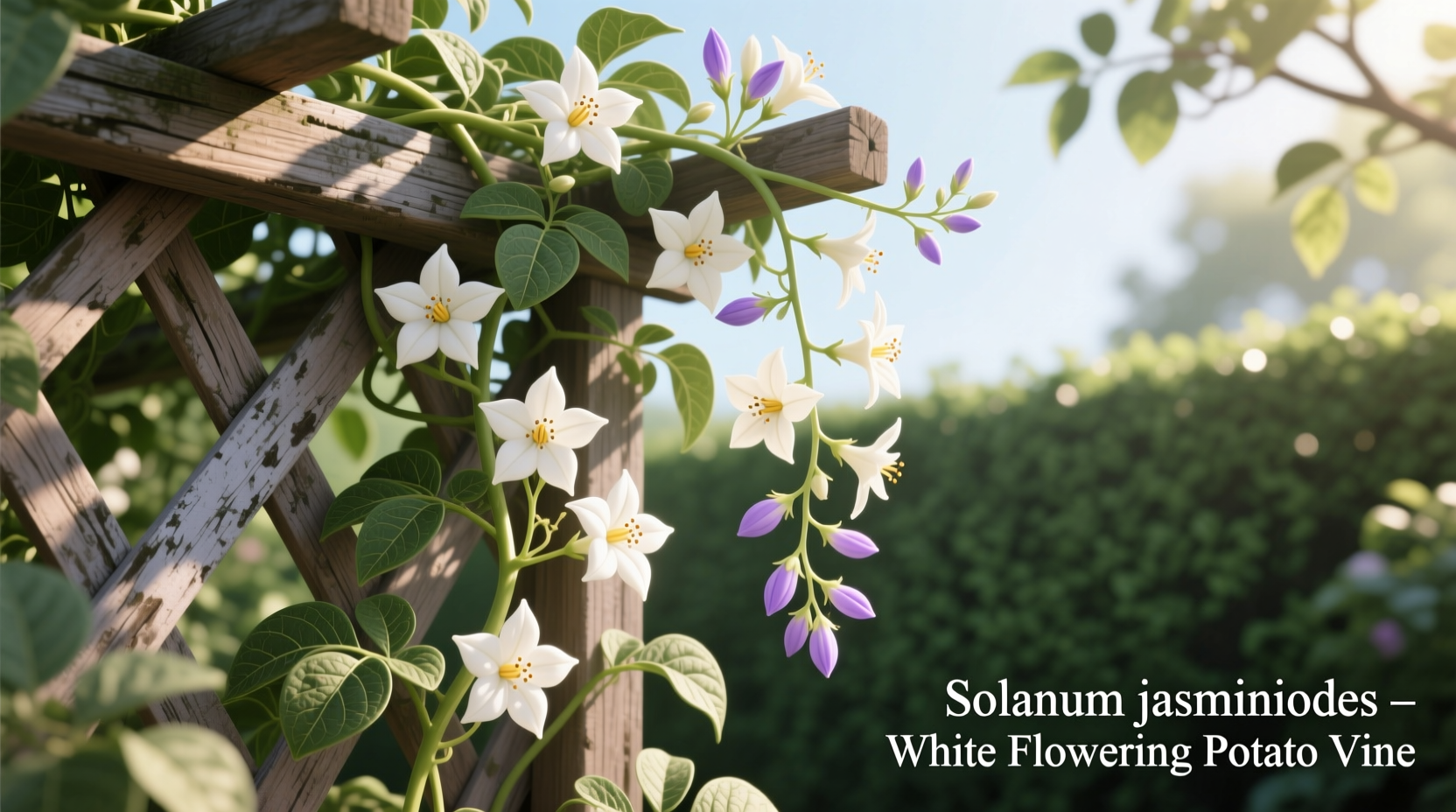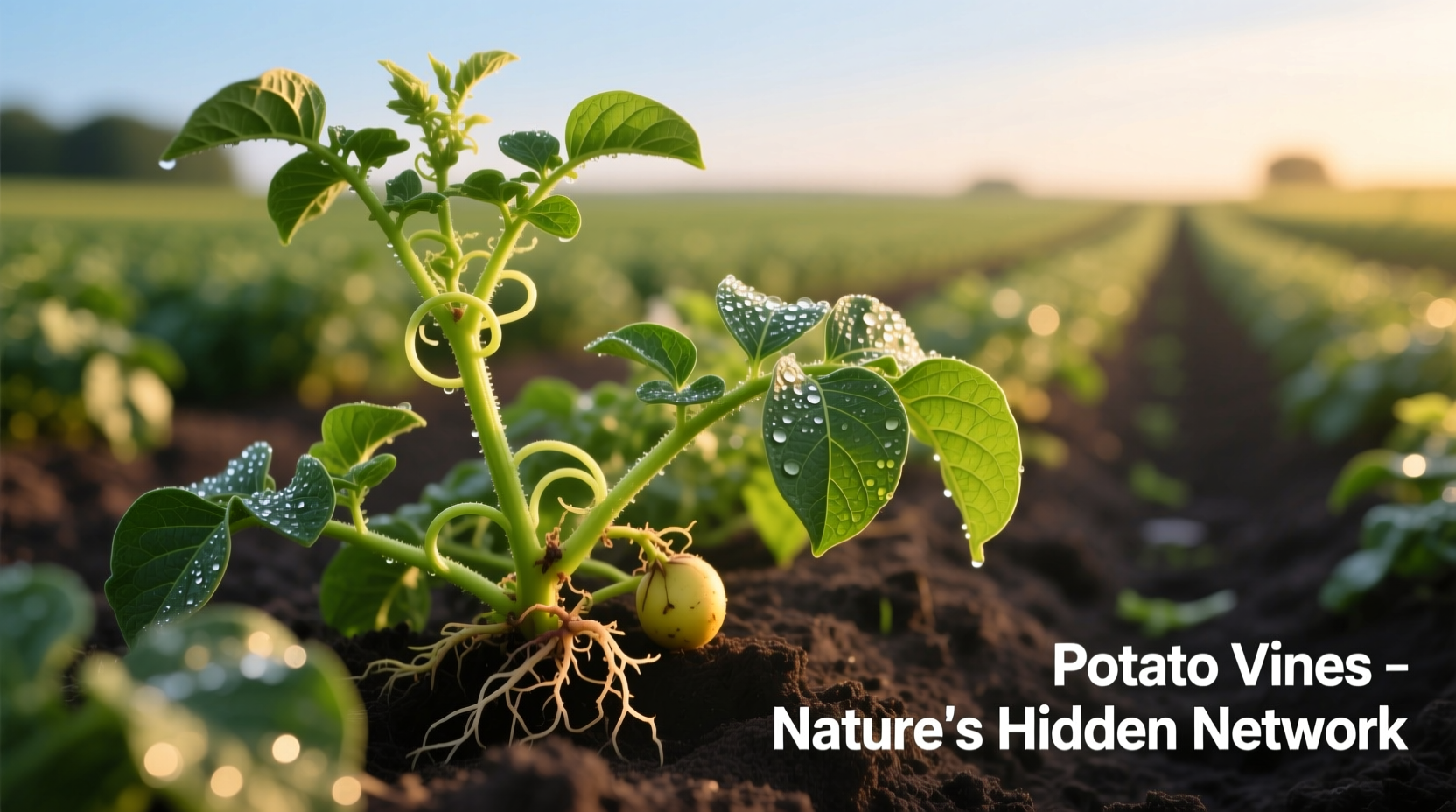Understanding Potato Vines: Beyond the Confusion
When gardeners search for "potato vines," they often encounter confusing information because the term applies to two completely different plant categories. This guide clarifies the distinctions, safety concerns, and proper care techniques so you can enjoy these plants responsibly.
What Exactly Are Potato Vines?
The term "potato vine" creates significant confusion in gardening circles. Let's clarify the two primary meanings:
Edible Potato Plant Vines (Solanum tuberosum)
These are the green, leafy stems that grow above ground from the potato tubers you plant. While these vines produce the edible potatoes underground, the vines themselves, leaves, and any green tubers contain solanine and chaconine—toxic glycoalkaloids that can cause nausea, headaches, and in severe cases, neurological problems.
Ornamental Potato Vines (Solanum species)
Plants like Solanum jasminoides (Potato Vine) and Solanum laxum (Silverleaf Nightshade) are popular ornamental climbers with attractive white or purple flowers. Despite their appealing appearance, all parts of these plants are toxic to humans and pets. The University of California Agriculture and Natural Resources confirms these plants contain similar toxic compounds to edible potato plants but in potentially higher concentrations.
| Plant Type | Scientific Name | Edible? | Primary Use | Toxicity Level |
|---|---|---|---|---|
| Edible Potato Plant | Solanum tuberosum | Tubers only (when not green) | Food crop | High (vines/leaves) |
| White Potato Vine | Solanum jasminoides | No | Ornamental | High |
| Silverleaf Nightshade | Solanum elaeagnifolium | No | Ornamental/Weed | Very High |
| Sweet Potato Vine | Ipomoea batatas | Leaves/tubers | Food/Ornamental | Non-toxic |
Critical Safety Information You Must Know
The American Society for the Prevention of Cruelty to Animals (ASPCA) lists Solanum species as toxic to cats, dogs, and horses. Symptoms of poisoning include gastrointestinal upset, weakness, and neurological issues. If you have children or pets, exercise extreme caution with ornamental potato vines.
Many gardeners mistakenly believe ornamental potato vines produce edible potatoes. This is dangerously incorrect. Unlike sweet potato vines (Ipomoea batatas), which are completely edible, ornamental Solanum species should never be consumed. The National Capital Poison Center reports numerous cases of poisoning from people confusing ornamental "potato vines" with edible varieties.

Growing Conditions for Healthy Plants
Whether you're growing edible potatoes or ornamental varieties, understanding their specific needs prevents common problems:
For Edible Potato Plants
- Soil: Loose, well-draining soil with pH 5.0-6.0
- Sunlight: Minimum 6-8 hours of direct sun daily
- Watering: Consistent moisture (1-2 inches weekly), reduce when vines yellow
- Harvesting: Wait until vines die back naturally for mature tubers
For Ornamental Potato Vines
- Climate: Thrives in USDA zones 9-11, can be grown as annual elsewhere
- Support: Needs trellis or fence (can reach 20+ feet)
- Pruning: Cut back by 1/3 in early spring to encourage flowering
- Winter care: Protect roots with mulch in marginal climates
Common Problems and Solutions
Both types of potato vines face similar challenges, but solutions differ based on plant type:
Yellowing Leaves
Edible potato plants: Often indicates normal maturation before harvest. If premature, check for potato beetles or fungal diseases.
Ornamental varieties: Usually overwatering. Allow soil to dry slightly between waterings. The Royal Horticultural Society notes that Solanum species prefer "moist but well-drained" conditions.
Pests to Watch For
- Potato beetles: Hand-pick or use neem oil (edible plants only)
- Aphids: Spray with strong water stream or insecticidal soap
- Spider mites: Increase humidity and apply miticide if severe
Propagation Techniques That Work
Successfully multiply your potato vines with these proven methods:
From Cuttings (Ornamental Varieties)
- Take 4-6 inch stem cuttings in spring
- Remove lower leaves, dip in rooting hormone
- Plant in moist potting mix
- Cover with plastic to maintain humidity
- Roots typically develop in 3-4 weeks
From Tubers (Edible Potatoes)
Use certified disease-free seed potatoes. Cut larger potatoes into pieces with at least one "eye" per piece. Let cut surfaces dry for 24-48 hours before planting to prevent rot.
Popular Varieties Compared
Choosing the right variety makes all the difference in your gardening success:
- 'Album' (Solanum jasminoides): Classic white-flowered variety, vigorous grower
- 'Friedrich Stetter' (Solanum crispum): Purple flowers, more cold-tolerant
- 'Blackie' (Ipomoea batatas): Ornamental sweet potato with deep purple leaves
- Russet Burbank: Popular edible potato variety for baking
When to Call a Professional
If you suspect poisoning from any potato vine variety, contact poison control immediately. In the US, call 1-800-222-1222. For persistent plant health issues that don't respond to standard treatments, consult your local cooperative extension service—they provide research-based solutions specific to your region.











 浙公网安备
33010002000092号
浙公网安备
33010002000092号 浙B2-20120091-4
浙B2-20120091-4